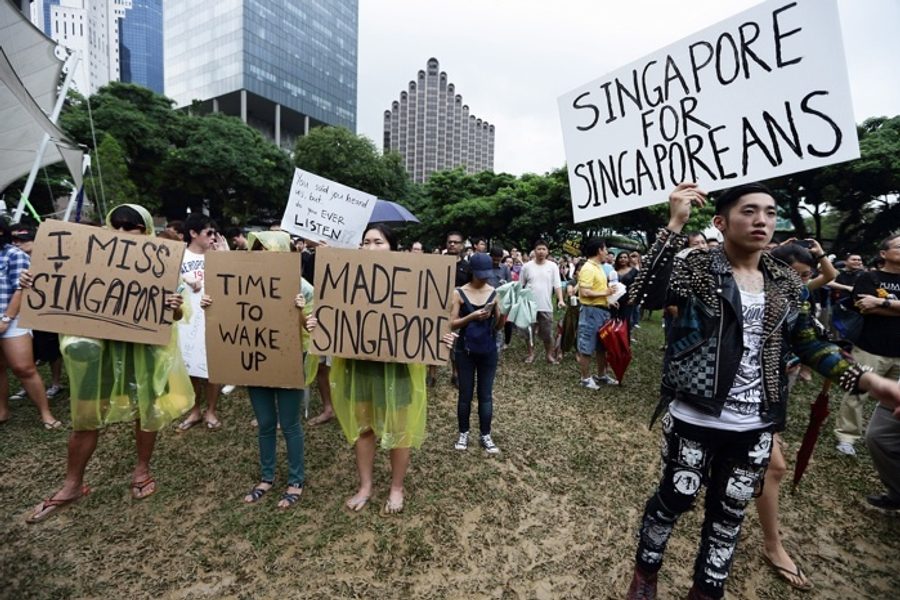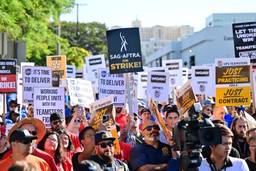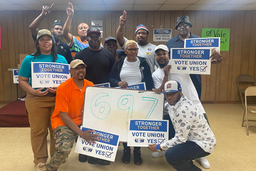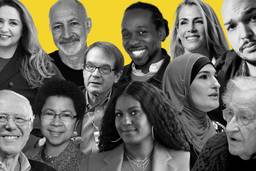
A spontaneous strike in November, the first in 26 years, shook up the tight social order of Singapore. As with many aspects of this gleaming global trade hub, the labor action was an import, of sorts. The agitators were Chinese bus drivers protesting the transit company SMRT’s policy of paying Chinese migrants less than other workers. Though the action was relatively limited, with about 171 drivers refusing to work, it did break the law and disrupted the city-state’s usual ultra-efficiency for two days.
In late February, a Singaporean court sentenced four strike leaders to jail for up to seven weeks, despite widespread criticism of the charges from human rights activists. Authorities had already sent a strong warning message by levying heavy fines on some participants and deporting 29 back to China.
For decades, Singapore has been an emblem of the post-colonial Pacific dream, boasting a robust economy, relatively wealthy citizens and a well-oiled bureaucracy. But the unrest among the migrant Chinese drivers, who make up nearly a quarter of SMRT’s total workforce of 2,000 drivers and earn significantly less than their coworkers, underscores the divide between the migrants, who comprise about 35 percent of the workforce, and the “native” Singaporeans, many of whom are uncomfortable with the growing reliance on foreign labor.
After the strike, native Singaporeans expressed their disdain for Chinese workers in online forums, denigrating the strikers as lawbreakers. (Transit workers are forbidden from striking unless they provide their employer with two weeks advanced notice.)
According to John Gee of the Transient Workers Count Too, a local immigrant rights group, the Chinese bus drivers are among a huge second-tier workforce of exploited foreign-born workers who have minimal social or legal protection from unscrupulous employers:
Employers are legally allowed to send workers home without explanation, and the unions don’t intervene in this, though we know that this is one way in which some employers deal with workers who they see as ‘troublemakers.’ They ask for the pay promised them, complain about their accommodation, things like that. SMRT actually behaved a bit better than some employers we run across, in that it ignored workers’ complaints, whereas some companies would have sent ‘ringleaders’ home as soon as they raised their heads.
Singapore’s colonial legacy has seeded the city state with a remarkably heterogeneous population, with communities of Chinese, Malay and Indian ancestry. The country has since brought in huge numbers of migrants, largely from Malaysia, China, and South Asian countries, through an elaborate labor visa system. But “natives,” mostly citizens of Chinese and Malay ancestry, have developed a love-hate relationship with their burgeoning underclass of outsiders. In some ways, xenophobia in Singapore parallels the nativism in the United States, with its paranoid rhetoric about newcomers overrunning U.S. society and “stealing” jobs. A public debate about a perceived “baby scarcity” has emerged, revealing deep-seated anxiety about what many Singaporeans see as a national identity crisis. And the Singaporean Workers’ Party recently issued a controversial report that discussed setting a future “cap” on migration.
The paper prompted several thousand to stage a rare public protest, with native Singaporeans complaining about a loss of “cultural identity” and the need to preserve a so-called “Singaporean core.”
The migrant bus drivers paid dearly for asserting their rights in this climate. Several drivers have complained of being brutalized by the police. Migrant advocacy and human rights groups have demanded an official investigation of the abuse allegations and greater protection for migrants’ right to strike and freely associate
Activists note that the widespread anti-migrant bias infects organized labor as well. Though immigrants are allowed to join most unions, they are essentially barred from positions of leadership, as Human Rights Watch reported in December.
Gee says that Singapore’s labor unions tend to be “strike averse” and seek cooperation with management rather than militancy:
Mediation and negotiation are the commonly accepted ways to settle disputes. In our experience, migrant workers only protest when they feel desperate: they will endure a lot, but since their families rely on the money they sent home, they are least likely to be patient when they don’t get the pay they believe they are due.
However, that may be changing. About a year before the bus strike, a small group of Indian construction workers stopped work to protest unpaid wages. And new reforms have been announced by the bus company that bring contract terms for Chinese bus service workers into alignment with those of other drivers; they may or may not have been in response to the strike.
While Singapore’s unions may have qualms about embracing migrant workers, they ought to heed the bus striker’s warning that the prosperity and stability they so value is built on a precarious foundation of inequality.
Michelle Chen is a contributing writer at In These Times and The Nation, a contributing editor at Dissent and a co-producer of the “Belabored” podcast. She studies history at the CUNY Graduate Center. She tweets at @meeshellchen.








